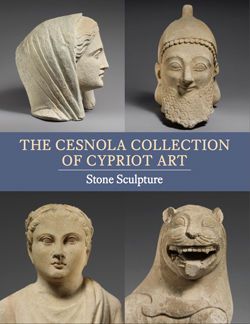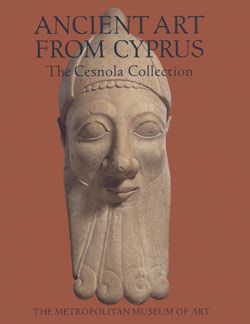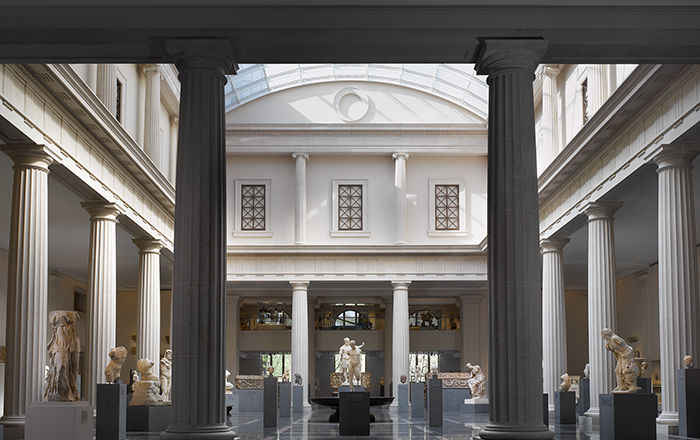Limestone statue of a bearded man with votive offerings
Not on view
After the absorption of Cyprus into the Persian Empire in 526/5 B.C. contacts increased with the wealthy East Greek cities on the western coast of Asia Minor, which had also fallen under Persian rule. The influence of Greek sculptural style can by seen in this statue of a man dedicated in a temple at Golgoi. He wears typical East Greek dress, a finely pleated linen chiton, and a woolen himation (cloak), and stands with left foot advanced in a pose that gives a subtle sense of movement. His smile and the jewel-like precision with which his hair and beard are carved remind one of Greek Archaic art of the sixth century B.C., but the style appears stiff and somewhat artificial in this statue, which was carved in the second quarter of the fifth century.
Like many Cypriot votive statues this figure wears a wreath of leaves and flowers. It is composed of oak leaves and stylized narcissus flowers, which must have evoked ideas of fertility and regeneration. The man holds gifts for the deity—a dove in his left hand and a cylindrical object, which probably represented a container of incense, in his right hand.
#1107. Limestone statue of a bearded man with votive offerings
This image cannot be enlarged, viewed at full screen, or downloaded.





